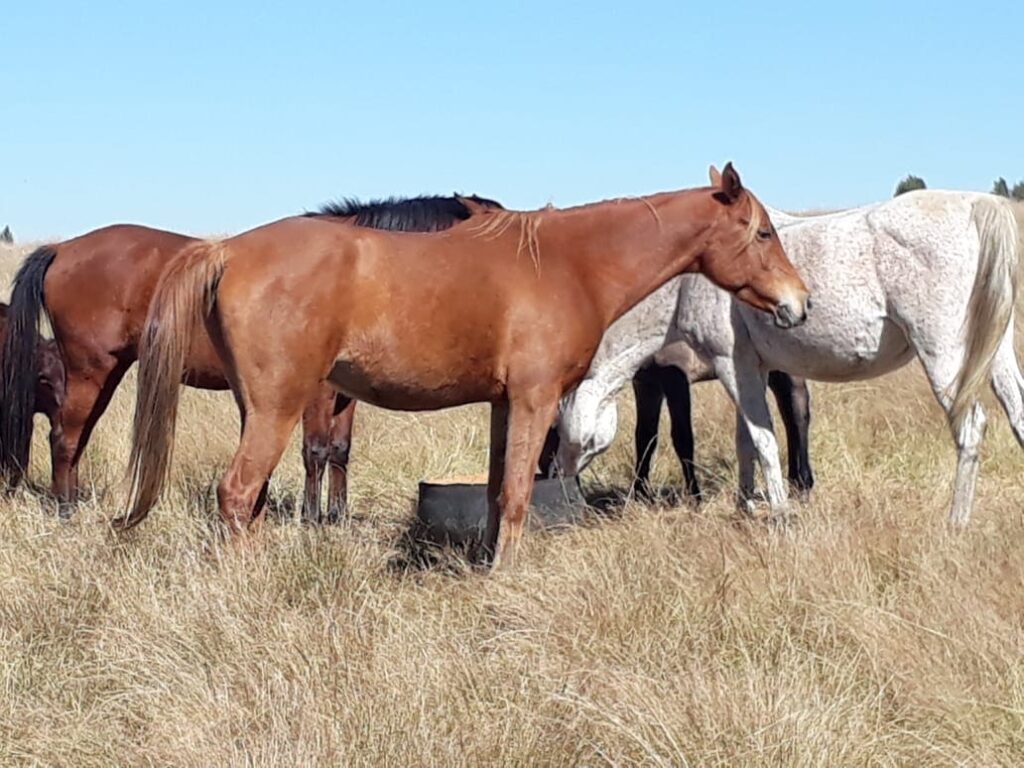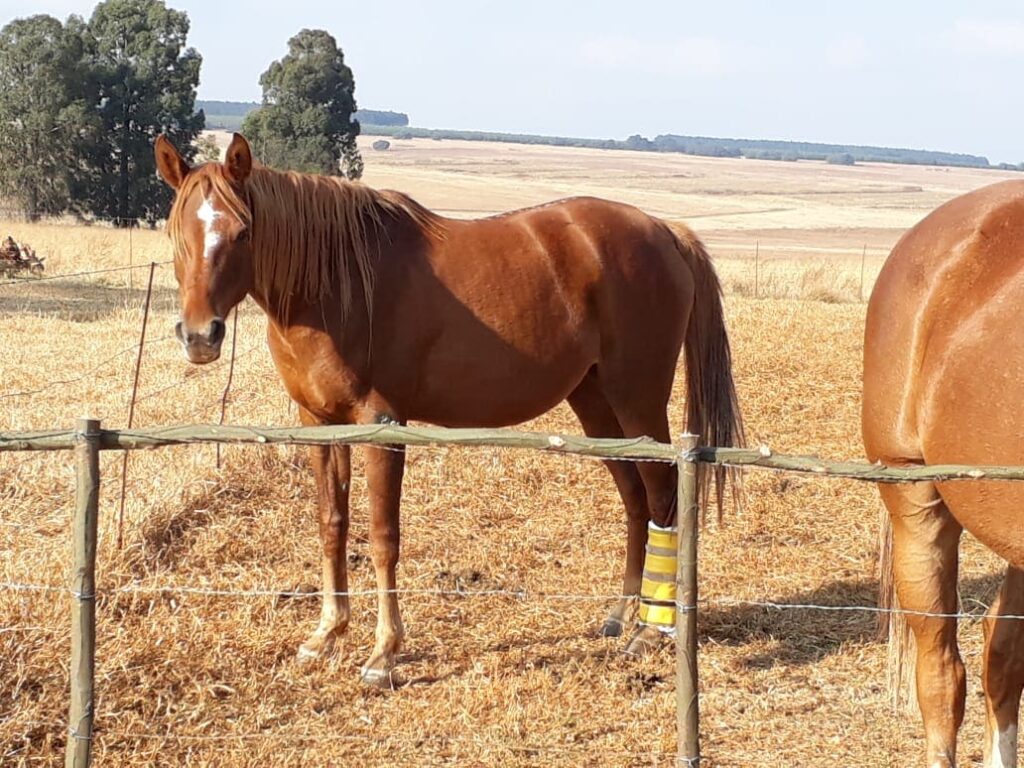El Salil Paloma, a Saqlawiyah Jadraniyah of Ibn Sudan
El Salil Paloma is a 2009 Saqlawiyah Jadraniyah from the Nabilah tail female line, in South Africa, out of the mare Induba Wasifa, by the Kuhaylan al-Mimrah stallion Skarabee Picasso.
Nabilah (Enzahi x Zamzam) was one of the two Egyptian mares imported in 1945 from the Royal Agricultural Society by Claude Orpen, along with the well-known Mimrahiyah Barakah. After arriving in South Africa, Nabilah was sent to Namibia, where she produced her daughter Inzam Saklabilah by the stallion Gordonville Ziyadan. All Nabilah’s descendants today trace to this one registered daughter.
In addition to her status as one of the rare Nabilah line mares, El Salil Paloma is precious in South African asil breeding, as she is also one of the few Nabilah tail female descendants without Hanan or Tifla. To date she has produced two asil foals, a colt by El Salil Benjamin and a filly by Kromar Xoyatan, but the filly sadly died last month.
Paloma herself nearly did not make it to adulthood, as her owner and breeder Fallon Thiele writes:
When Paloma was a 3month old filly she was caught in a snare, it severed her back tendon on her right hind leg. We nearly put her down if it were not thanks to Dr Hercu Van Niekerk our local vet. I continued to bandage her for almost a year until her leg healed. She can walk and run fine now. We stabled her most of her life at night and found she would continue to bump her scab on her wound open. For the past 6 years of her life she has lived out and rarely bumps her leg.
It is a good thing for South African asil breeding that Paloma was saved, and has contributed to the continuation of the Nabilah line here.
Photos of Paloma provided courtesy of Fallon Thiele.


Thanks for all the trouble you went to Kate!!!!
A well deserved five out of five peanuts!
Needs more foals!!
Let me be provocative here: what’s with Hanan and Tifla? 🙂
Well, on the one hand, a lot of the asil horses in South Africa feature these two mares, Hanan through the stallions imported from Simeon Stud, and Tifla I want to say almost entirely through her grandson Omar el Shaker, so to find a Nabilah line mare without these horses is very unusual, and makes for a spot of extra diversity in the Nabilah tail female horses. And I am all for diversity in pedigrees, to maintain genetic health.
The other reason for highlighting these mares is that, with Hanan, we don’t have enough information on the Bisharat horses at present to confirm their links to the desert. The Trans-Jordan Frontier Forces, from which her dam Mona’s paternal grandparents were purchased, did have a breeding programme, which included a handful of Arabian stallions, but also had countrybred horses. There’s a report by the Trans-Jordan mounted police that says they rode mostly Arabian geldings, but the police aren’t the Frontier Force, so while one miiiiight assume that the Frontier Force and the police sourced their remounts from the same places, there isn’t any solid proof of that – and besides, the police report is just an overview.
So, is there a problem with Hanan? Well, she’s accepted by Al Khamsa, which is, as far as I am aware, pretty thorough in its research. Midhat Bisharat, the son of Shibley Bisharat, who was the purchaser of Beshier El Askhar and Badria from the TJFF, wrote to Dr Nagel, giving the strains of the parents of these two horses. But right now, we simply don’t have the ability to connect these horses to their original owners and breeders. So, instead of throwing the baby out with the bathwater, as happened to Nureddin II, I think it is worthwhile knowing that we have incomplete information for Hanan’s line, and factoring that into our decisions – is it an acceptable degree of risk, or is it not? That, I think, is a personal choice.
As for Tifla, there’s no problem with Tifla herself. If there is a “problem”, I guess it would be more about her offspring bred at Albadeia Stud, as a number of Albadeia-bred horses have been exported with incorrect pedigrees. *El Garia, for instance, was exported as a daughter of Tuhotmos, but her sire has since been changed to Ibn Galila. *Bint Shaams, as another example, is a grey mare, but her parents as registered are both bay – a genetic impossibility. So, while the Tifla descendants have not had their pedigrees disputed, it is another of those instances where being aware that Albadeia exports were prone to pedigree errors is worth knowing, so that breeders can once again decide whether this is something they feel is problematic or not.